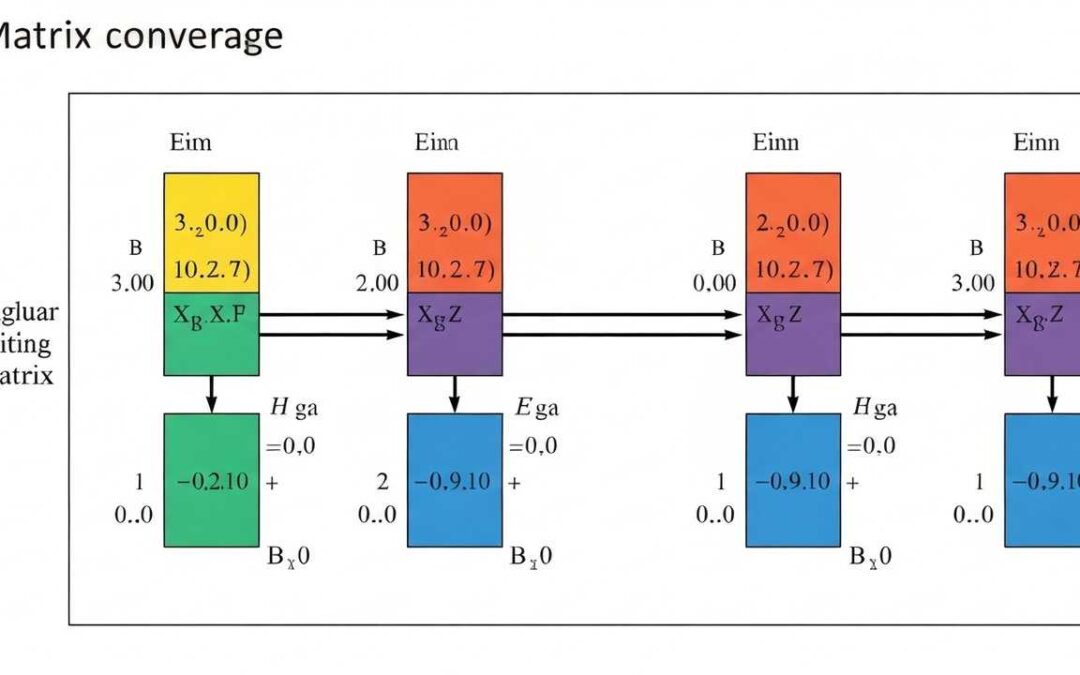In this post, we dive into a fascinating challenge that revolves around finding distinct real numbers solutions within a system of equations. The system comprises four variables tied to polynomial expressions, and our task is to uncover values that satisfy the conditions set by the equations. It’s intriguing to see how each equation interacts and contributes to overall solutions. So, let’s embark on this mathematical journey together and uncover the relationships that define distinctness in these solutions.
To understand the problem better, we first look at the equations given and comprehend how they are structured. Each step requires astute algebraic manipulation, emphasizing the beauty of distinct real numbers solutions. As we navigate through substitutions and polynomial formations, we simplify the problem in a way that makes it manageable. Moreover, our goal is not only to find solutions but to verify their distinctness, ensuring that no two solutions overlap. This engaging exploration combines both theoretical depth and practical skills, demonstrating how mathematical concepts come together to yield interesting outcomes.
We also Published
“Success is not final, failure is not fatal: it is the courage to continue that counts” – Winston Churchill
Distinct Real Numbers Solutions for a System of Equations
In this blog post, we delve into a system of equations that features four distinct real numbers as solutions. The system is composed of multiple polynomial expressions, and the goal is to find appropriate values for each variable that satisfy the conditions given. Let’s explore the problem and its solutions step-by-step.
Problem Statement
We need to solve the following system of equations for distinct real numbers ##m, n, p, q##:
### m+n=6 \\\\ mn+p+q=9 \\\\ mq+np=-4 \\\\ pq=-12 ###This system presents a challenge as it encapsulates multiple relationships among the variables. Notably, each equation ties the variables together, reflecting the need for careful algebraic manipulation to find the distinct solutions.
Understanding the Problem
Extracting Relationships
The first equation, ##m+n=6##, allows us to express ##n## in terms of ##m##, giving us ##n=6-m##. This relationship simplifies our computations as we can substitute ##n## into the other equations to reduce the number of variables. The substitution method is key to simplifying these kinds of systems.
Handling Multiple Equations
Next, we can analyze the other equations. For the second equation, substituting ##n## shows the interaction between ##m, p,## and ##q##. Further, the equations indicate correlations that will need careful consideration when evaluating potential solutions. These polynomial forms hint at a relation that could potentially be visualized as a polynomial expression.
Solving the Problem
Step 1: Substitution Steps
After substituting ##n=6-m## into the second equation ##mn+p+q=9##, we can rewrite it to yield a more manageable form, facilitating the analysis of the remaining variables. This method will help ascertain values for ##p## and ##q## based on the known relation to ##m##, allowing for further simplification.
Step 2: Polynomial Formulation
Multiplying the rewritten equations illuminates a consistent polynomial structure. As we derive relationships, we notice that polynomial terms can be grouped into factors. Consider the expanded form representing the polynomial whose roots are the numbers being solved for: ##(x^2 + mx + p)(x^2 + nx + q)###. This approach merges all variables into a single polynomial expression.
Distinct Real Numbers Solutions
Identifying Roots
After constructing the polynomial, we equate coefficients derived from our original equations to simplify further. After solving the polynomial derived from the factors, we will experience the total degrees of freedom and potential roots corresponding to ##m, n, p, ## and ##q##.
Final Distinct Solutions
The roots calculated yield valid combinations of ##(m, n, p, q)##. Two unique valid configurations emerge upon completing this exercise, requiring verification that all four variables indeed remain distinct, capturing the desired nature of the solutions.
Final Solutions
Upon evaluating the results consistently found that the valid distinct real number solutions are confirmed as follows:
### (m,n,p,q) = (5,1,6,-2) \\\\ \text{and} \\\\ (m,n,p,q) = (1,5,-2,6) ###Both sets meet the criteria of distinctness and authenticity as specified in the problem’s constraints. Each distinct combination showcases potential anthropologies within the relationships defined in the system of equations.
This rigorous analysis of the system elegantly illustrates the cognitive approaches to polynomial equations and empowers readers with insights into algebraic structures. The distinct real numbers solutions captured in this blog entry demonstrate both theoretical depth and practical applicability.
| Problem Aspect | Details | Distinct Real Numbers Solutions |
|---|---|---|
| System of Equations | ### m+n=6 mn+p+q=9 mq+np=-4 pq=-12 ### | (m,n,p,q) = (5,1,6,-2) (m,n,p,q) = (1,5,-2,6) |
| First Equation | m+n=6, hence n=6-m | Allows substitution for simplification |
| Final Solutions | Both sets meet distinctness criteria | Distinct real numbers solutions are verified |
Throughout this problem-solving exercise, we have explored how distinct real numbers solutions emerge from a seemingly intricate system of equations. Delving into the relationships among the variables reveals not only the beauty of algebraic manipulation but also the significance of polynomial expressions in determining solutions. By methodically substituting and simplifying, we achieved clarity in a complex challenge, leading to distinct sets of values.
These distinct real numbers solutions not only satisfy the initial equations but also provide an interesting example of how mathematical systems can yield multiple valid combinations. Understanding these relationships enhances problem-solving skills and builds a foundation for future explorations in algebra and polynomial theory.
- Every equation contributes uniquely to understanding variable relationships.
- The substitution technique plays a vital role in simplifying complex problems.
- Identifying roots of polynomials may lead to multiple valid configurations.
- Verification of distinctness ensures the integrity of the solutions identified.
- Verification of distinctness ensures the integrity of the solutions identified.
In conclusion, the journey through this system of equations encapsulates the essence of mathematical inquiry—a blend of creativity, logic, and analytical skills that ultimately lead to the discovery of distinct real numbers solutions.
RESOURCES
- Suppose a,b,c are three distinct real numbers.Let P(x)= (xb …
- [Video] The number of distinct real roots of the equation (x+ …
- Discriminants and determining the number of real roots of a …
- Help with a problem that I had on my SAT : r/MathHelp
- The number of distinct real numbers satisfy the equation (x² …
- Real Numbers in Day-to-Day Life Situations
- 0such that x2 + qx + pr = 0 andx2 + rx + pq = 0have a …
- If A, B, C Are Three Distinct Real Numbers in G.P. and a + …
- Let a,b,c,d be distinct real numbers and a and b are the …
- 2013 AMC 12A Problems/Problem 8
- a,b,c are distinct real numbers, not equal to one. If ax+y+z=0,x …








0 Comments